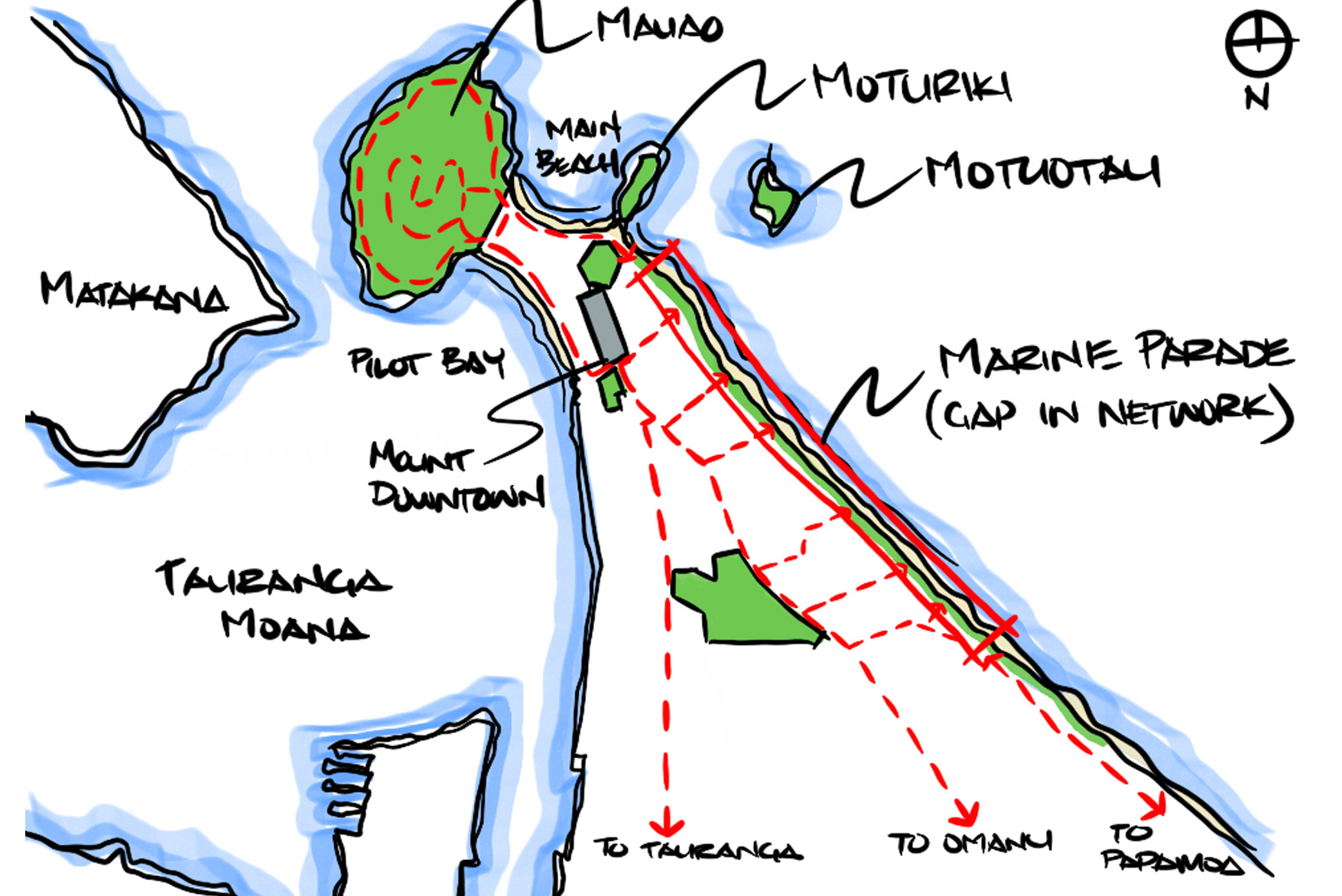The Marine Parade coastal strip is a challenging area to design within, as the dune environment is constantly changing from wind and wave erosion, and is extremely sensitive in terms of cultural, ecological and landscape values.
Building upon work that had been done previously, Boffa Miskell led the re-development of the design for Tauranga City Council in partnership with mana whenua. By utilising Boffa Miskell’s Te Whakawhitinga process and threading Hapū into our project from the inception, they have been integral in informing the project values, design principles and overall outcomes of the project. This collaborative process is articulated in a design which caters for a huge variety of users, while importantly expressing the cultural narratives of mana whenua and protects and enhances the sensitive coastal landscape.
Boffa Miskell’s ongoing involvement spans the initial investigation and feasibility and continued through the co-design and engagement phases, to develop an outcome that exceeds the brief and has strong mana whenua and public support. Boffa Miskell also led the consenting, assessments, DOC permitting and pest management plan for the project.
The primary shared pathway spans the 3.5km stretch of coastal margin. It is built with a combination of concrete and timber depending on the specific environment it is moving through. These material selections reduce impacts on the natural environment and create an enduring pathway while minimising maintenance.
The broader design includes consolidation of other pathways and beach access points and the enhancement of all activity and picnicing areas.
There is extensive dune revegetation, enhancement of stormwater treatment areas and provision of native trees for shade. Throughout the project and working closely with mana whenua, cultural narratives and the telling of important kōrerō are embedded into the design, both overtly and in subtle ways.
Read more about the project
